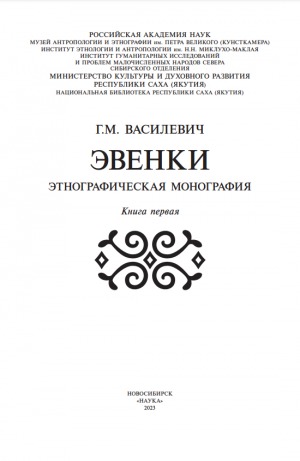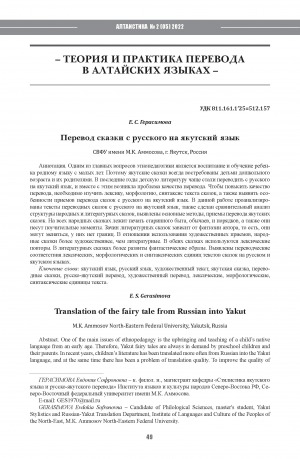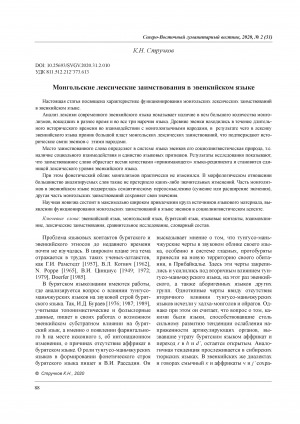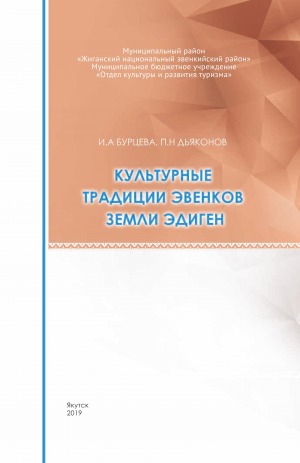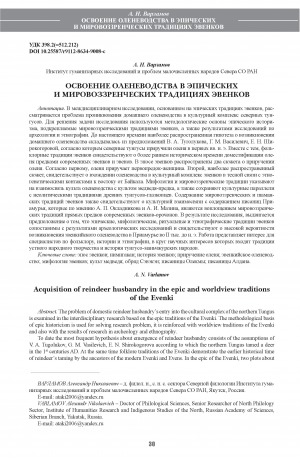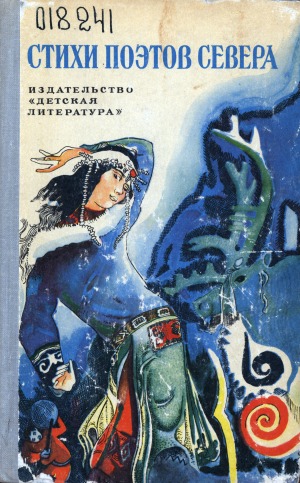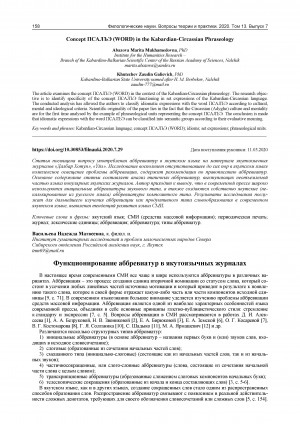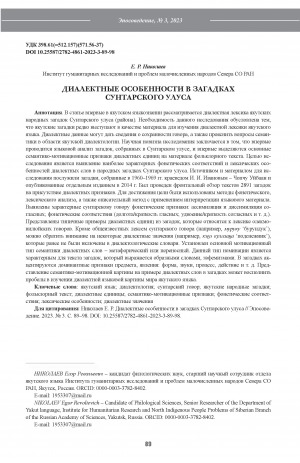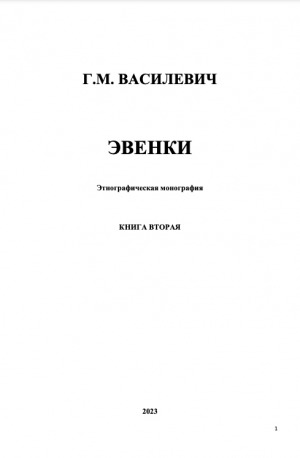
Циклическое представление времени в поэзии Николая Оёгира (на материале эвенкийского языка) = Cyclic representation of time in the poetry of Nikolai Oyogir (based on the material of the Evenki language)
Статья в журнале
Русский
811.512.212:821.512.212-1.09Оегир
10.25587/2782-6627-2024-2-27-34
циклическая модель времени; эвенкийский язык; темпоральные лексические единицы; эвенкийская поэзия; хозяйственная деятельность эвенков; cyclic model of time; Evenki language; temporal lexical units; Evenki poetry; economic activity of Evenks
Языкознание / Языки мира / Урало-алтайские языки, Литература. Литературоведение. Устное народное творчество
Time is a fundamental category of human existence. In linguistics, it is of great interesthow real time is reflected in linguistic consciousness and refracted through individual, ethnic, and creative perception of time. The article considers the indicators of the cyclic model of time in the Evenki language. The purpose of this article is to establish ethnic-specific features of the perception of the cyclic model of time on the example of an artistic text. By means of observation, description, and the method of solid samplingon the material of poetic texts of the Evenki poet Nikolai Oyogir, we present an analysis and interpretation of the ways of verbalization of cyclic time in the Evenki language. At the same time, we revealed lexical units with temporal meaning, conveying the variability of the surrounding reality and the movement of time. Along with this, the relationship between the objective world and the ethnic linguistic consciousness is established. The linguistic approach to the study of the category of time has great prospects, as it provides an opportunity to understand time in a particular ethnos.
Савлепова, Т. В. Циклическое представление времени в поэзии Николая Оёгира (на материале эвенкийского языка) / Т. В. Савлепова ; Эвенкийский этнопедагогический центр // Вестник Северо-Восточного федерального университета им. М. К. Аммосова. Серия "Алтаистика". - 2024. - N 2 (13). - C. 27-34. - DOI: 10.25587/2782-6627-2024-2-27-34
DOI: 10.25587/2782-6627-2024-2-27-34
Войдите в систему, чтобы открыть документ
